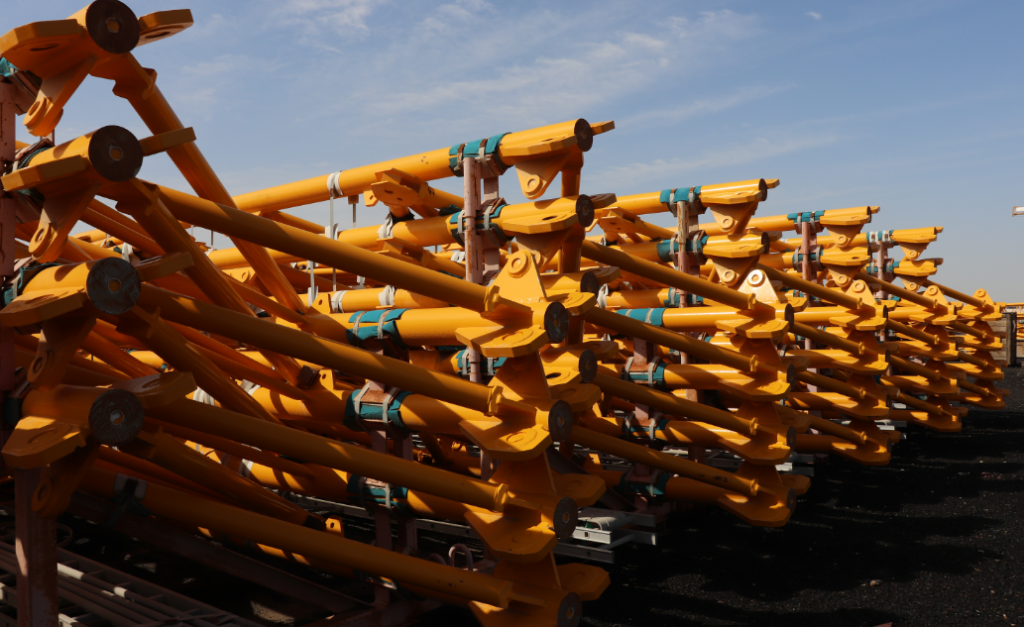If the Covid-19 pandemic has done anything, it’s to accelerate the need for businesses to embrace digital transformation.
NFT in December 2019 has concluded a deal with a UK based company and its UAE local representative to track its large fleet of tower cranes using Radio Frequency Identification Device (or RFID) solution.
All tower cranes, construction hoists and their respective parts and accessories are tagged and then linked to an asset tracking and management software. This in turn is then integrated with NFT’s software solution for Inventory Management and Asset Evaluation.
“Having the world’s leading fleet of tower cranes spread across 300,000 sqm calls for an automated way of tracking our Asset” says Plant Manager Amer Sneij. “Relying on a manual/offline solution was fine 20 something years ago when we had just a few hundred cranes spread across three medium sized yards, but today with 2,500 tower cranes, 500 hoists, 10,00o plus accessory types and a warehouse filled with spare parts, the old way has become a challenge.”
With an average turnover of one crane delivered per day and catering to multiple destinations worldwide, technology has become a necessity for NFT. “The objective is to minimize human error and wastage while optimizing inventory managing, strategic planning and “real time” decision making. IoT, RFID, Asset Tracking have become standard in the construction, logistics and oil and gas industries. We believe that NFT’s strategy for modernization and compliance with international standards of trading, allows it to be in the perfect position to adopt this technology and benefit from its operational efficiencies and cost saving,” added Nagham Al Zahlawi, Deputy General Manager.
A customized cloud-based system has been developed from scratch to match NFT’s process of fleet tracking, storing, loading, inspecting, assembling, mobilizing and re-stocking. For example, and to avoid loading tower crane parts on trucks or containers without any missing piece, an automated gate barrier at the workshop only opens when the reader scans all parts on board and signals that it’s good to go.
“This was an important feature to add because the worse thing that can happen on site during installation is for us to deliver a crane part with a piece missing, like a pin. It can holt the entire installation, delaying the project for the client” added Amer Sneij.
Once the workflow was developed, two tagging teams were assigned to complete the job on the ground. The teams are comprised of a Logistics Manager, two Logistics Supervisors, two Welders and four Logistics helpers. The teams have successfully tagged 200 tower cranes from July to September 2020 and aims to complete Phase 1 by Q1 021.
The next phase will be to track all construction hoists.

